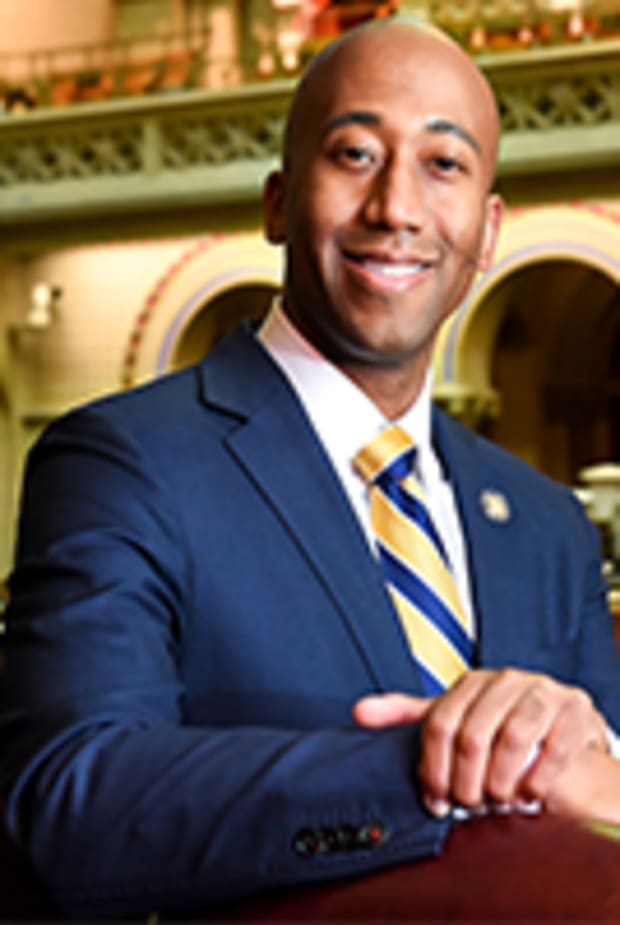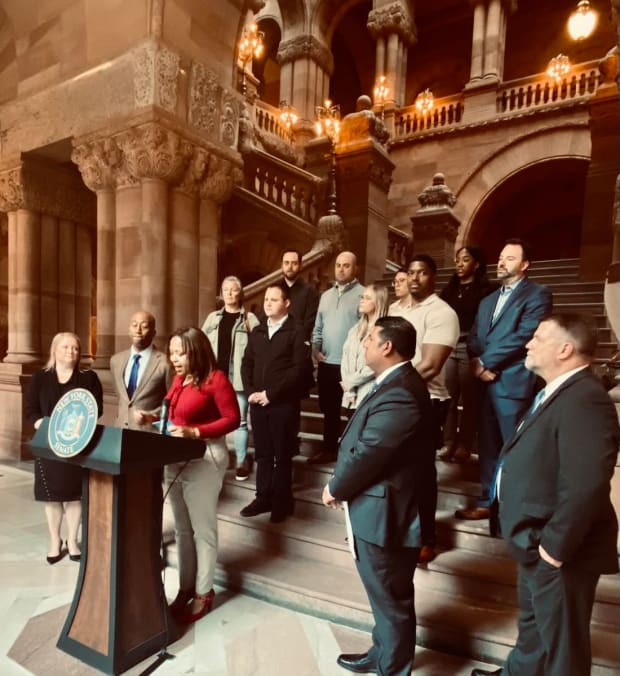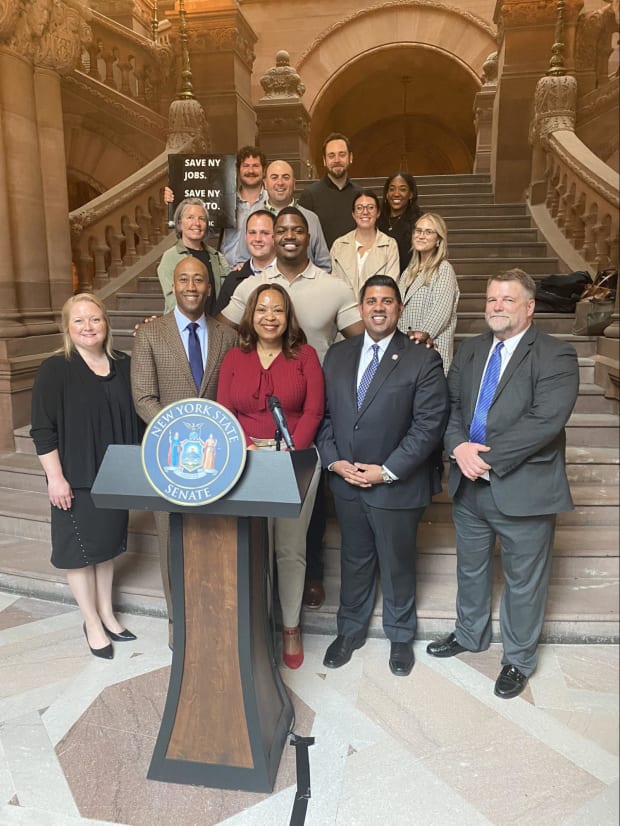- May 6, 2022
- Posted by: admin
- Category: BitCoin, Blockchain, Cryptocurrency, Investments
Bitcoiners and politicians come together in Albany, New York to speak out against a proposed ban on proof-of-work mining and to keep industry jobs in the state.
“This (Bitcoin) isn’t going to stop. Crypto mining may move somewhere where there is little or no concern for the environment.” –Ken Pokalsky, Vice-President of The Business Council of New York State
Pokalsky’s words echoed the sentiments of the half dozen speakers assembled at the New York State Capitol in Albany on May 2, 2022. Gathered on the Capitol’s famed “Million Dollar Staircase” were state legislators, Bitcoin industry leaders and advocates for technology jobs. The occasion was to urge Governor Kathy Hochul and the State Senate to oppose a two-year moratorium on proof-of-work mining. The bill has already passed the State Assembly.
The bill that passed the Assembly would impose a two-year ban on proof-of-work mining unless done with 100% renewable energy sources. Though much mining in the state is done with hydroelectric power, the ban would effectively shut down many mining facilities, including the Greenidge facility on Seneca Lake. Greenidge uses an older gas-fired plant to do its mining.
Both houses of the legislature and the governor’s chair are controlled by Democrats, so the environment is surely one of their biggest concerns.
The event was organized by Foundry Services of Rochester, New York. Foundry is a Digital Currency Group company, focused on mining, equipment sales, financing and staking services. The press conference, hailed by organizers as a “rally/protest,” drew only a couple of dozen supporters and a few legislators. The event was moderated by Cleve Mesidor, executive director of the Blockchain Foundation.
Assembly Member Clyde Vanel, representing the 33rd District in Queens, stated that while his party cares about the environment, they also care about jobs and good salaries. It was a theme touched on by many of the speakers.

State Senator Jeremy Cooney, representing the 56th District in Rochester, focused on how legacy financial institutions have long excluded people of color. “Financial inclusion should not be restricted by one’s zip code,” said Cooney. And an even more powerful statement from the senator, “We can’t stop the conversation with a moratorium.”
Pokalsky, quoted above, also focused on the fact that New York State has struggled to keep up with the nation in terms of job growth. The jobs theme was echoed by Assembly Member Addie Jenne, who also happens to be a regulatory counsel for the International Brotherhood of Electrical Workers union. Jenne said, “New York should not squander the opportunity to lead the nation in innovation.”

Adrian Hale, the director of economic and community development for Foundry, was probably the most powerful speaker at the event. Hale, previously with the Rochester Chamber of Commerce, pointed out that the city is the third-poorest city in the nation. He referenced the New York State “BitLicense” as an impediment to doing business in the state, and as especially hurting opportunities for Blacks and Latinos. He pointed out that there are very few other opportunities for minorities to earn “generational wealth.”
Hale pointed out that Rochester’s Bitcoin community is adopting the already-used slogan for employment fair opportunities, “ROC the block,” to reference local employment by blockchain companies.

The event had an interesting tone to it, as all of the legislative reps on hand were Democrats and most attendees were people of color. This was a point stressed by Jenne, who touted the diversity of the effort. The rally was promoted and attended by the Harlem Bitcoin Community as well. Bitcoin is generally thought of as a right-wing endeavor, but you wouldn’t have known it from this rally.
Hale stated that the goal of nearly everyone involved in the Bitcoin space was “a smart, equitable regulatory framework.”
The bill now moves on to the New York State Senate.

This is a guest post by Rick Mulvey. Opinions expressed are entirely their own and do not necessarily reflect those of BTC Inc. or Bitcoin Magazine.
